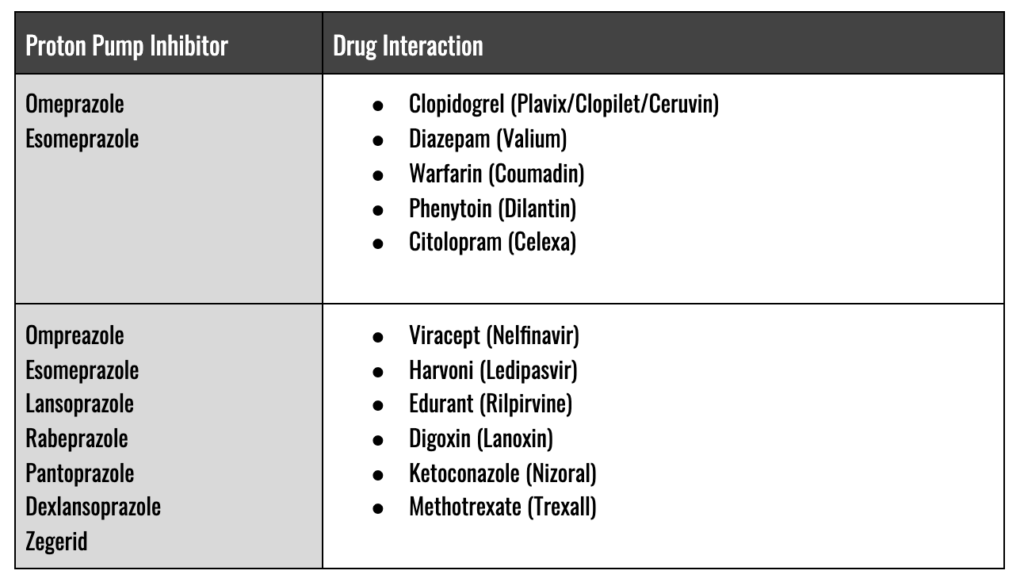Last Updated December 7, 2020
Since the early days of e-cigarettes and vaping in the United States, manufacturers such as Juul and others, have made spurious claims that their devices are either “safe” or “safer than tobacco”. The practice of touting the ostensible “benefits” to vaping and Juul use went unchallenged for several years while those in the scientific and medical communities became increasingly concerned that not only are they not safer, they may in fact pose new and unique dangers to human health.
It’s helpful to remember that despite whatever beneficial claims manufacturers make, these devices are designed and built for the express purpose of delivering nicotine, a dangerous and addictive chemical, either just as or more efficiently than combustible cigarettes. Furthermore, the vapors created by vaping and Juul contain additives and ingredients which may be linked to severe lung damage in adults and teens.
The potential for adverse side effects from vaping and Juuling has become so pronounced that the U.S. Food and Drug Administration (FDA) extended regulatory power over e-cigarettes and Juul to its Center for Tobacco Products in 2016. Later, in 2018, the U.S. Surgeon General declared e-cigarette use “…an epidemic among our nation’s young people”. Most recently, in April 2020, the FDA used its authority to ban the sale of flavored e-cigarette and Juul cartridges (except for menthol and tobacco flavors).
Now public health officials throughout the United States have started to document and publish studies into the association between vaping, addiction, and respiratory distress.
Commonly Associated Side Effects of Vaping
Vaping and Juul use have commonly understood side effects from their use. These side effects may be more noticeable among new users and may disappear over time once the use of vaping or Juul products have been discontinued:
- Coughing
- Dry or Sore Throat
- Dry Eyes
- Headaches
- Nausea
- Dizziness
- Dry Mouth
- Shortness of Breath
Nicotine Addiction and Withdrawal Side Effects
E-Cigarettes and Juul are nicotine delivery devices and contain nicotine just like combustible cigarettes. They may even be more potent at putting nicotine into the bloodstream given the high concentrations deposited by the vaping mechanism. Added to this potency is the fact that many vaping systems sell high concentration nicotine cartridges or allow voltage to be augmented to bump up the amount of nicotine.
It is well understood that nicotine is extremely addictive and is dangerous for adults and teens alike. Short term exposure to nicotine has been demonstrated to induce tremors and an increase in heart rate, blood pressure, and respiration. It is suspected to cause issues in early teen and fetal brain development. Furthermore, long-term exposure to nicotine is linked to tumor growth and promotion.
Nicotine addiction is insidious and difficult to overcome. In adults and teens alike, nicotine triggers a dopamine “reward” effect which encourages the user to keep using nicotine over and over again. Consequently, when e-cigarette and Juul users attempt to quit vaping, they tend to suffer nicotine cravings and other side effects such as:
- Feeling irritable
- Headaches
- Increased sweating
- Anxiety
- Sadness
- Feeling tired
- Difficulty with concentration
- Insomnia or difficulty sleeping
- Increased hunger
Breathing Issues
Over several decades, the American public has been made well aware of the numerous hazards associated with smoking combustible cigarettes such as heart disease, emphysema, and lung cancer. Regrettably, because e-cigarettes and Juul remove the combustible element inherent in traditional cigarettes, many people believe that these devices pose no risk at all to lung health. However, the scientific and medical communities are now voicing new concerns about vaping compounds and lung health that introduce a range of new potential side effects.
Bronchiolitis Obliterans Organizing Pneumonia (BOOP)
Researchers recently published an article concerning the prevalence of Bronchiolitis Obliterans Organizing Pneumonia (also known as “BOOP”) in the American Thoracic Society (ATS) Journal. BOOP is a lung disease which causes inflammation in the small air tubes (bronchioles) and air sacs (alveoli). Ordinarily, BOOP symptoms include: shortness of breath, dry cough and fever. Some symptoms may be much more acute than others. BOOP is typically treated with a drug regiment focused on corticosteroids such as prednisone.
E-Cigarette or Vaping Associated Lung Injury (EVALI)
EVALI was first recognized by the U.S. Centers for Disease Control (CDC) in August 2019 following the combined work of several public health officials across the United States to study cases of severe and sometimes fatal lung infections in several otherwise healthy people. The individuals who required hospitalization complained of symptoms such as shortness of breath and fever. The common factor among all of them was that they were recent users of e-cigarettes and vaping products. The CDC and the New England Journal of Medicine have conducted further research which suggests, Vitamin E Acetate, a thickening agent used in some vaping products, may be linked with EVALI.
Adam Hergenreder
Eighteen-year-old Adam Hergenreder was a steady e-cigarette user for over two years. His favorite flavors were mint and mango. In September 2019, he was hospitalized complaining of acute lung issues and shortness of breath. After undergoing chest X-rays, his doctors told him he had the lungs of a 70-year old man and that his lungs may never truly heal.
Vaping-Related Acute Lung Injury
The December 2019 Mayo Clinic Proceedings examined the potential for breathing issues and vaping in its article: “Vaping-related Acute Lung Injury: A New Killer Around the Block.” Among the article’s highlights was the conclusion that the incidence of vaping-related acute lung injury is increasing and that electronic cigarette compounds present the potential for a range of detrimental effects on the human respiratory system.
Neurological Issues
Alleged Hemorrhagic Stroke
In 2017, 22-year old Syracuse University student Maxwell Berger suffered a severe hemorrhagic stroke which paralyzed the left side of his body and caused him to lose half of his vision in both eyes. Maxwell began vaping with Juul in 2015 and quickly developed a two-pod-per-day habit. In a lawsuit he filed in 2019, Maxwell alleges that his use of Juul caused his stroke as well the cognitive brain impairment he has experienced as a consequence.
FDA Investigation Into Possible Link to Seizures
In a series of 2018 internal communications uncovered by Bloomberg News, the FDA took a hard look at three cases of seizures that occurred alongside Juul use. To be sure, the FDA did not detail any direct causal link between Juul and the seizures. However, they did believe that at a minimum, there was an “association” between the seizures and Juul. Over the next few months, the FDA uncovered an additional 32 reports of vaping and seizures and in April 2019, the agency announced a formal investigation into a linkage.
Juul Pod Contamination
A former Juul Labs executive filed a 2019 lawsuit in federal court in California alleging that at least one million contaminated Juul pods made it onto the market despite numerous warnings to the company’s leadership. In his lawsuit, Siddarth Breja alleged that Juul’s CEO Kevin Burns told him: “Half our customers are drunk and vaping like mo-fos, who the f**k is going to notice the quality of our pods?” Juul’s CEO has publicly denied the allegations.
Sources Cited (63)
1) “Side Effects of Vaping” https://vapingfacts.health.nz/the-facts-of-vaping/side-effects-of-vaping.html
2) “What are the risks and side effects of JUUL e-cigarettes?” https://www.medicalnewstoday.com/articles/juul-side-effects
3) “Can vaping damage your lungs? What we do (and don’t) know” https://www.health.harvard.edu/blog/can-vaping-damage-your-lungs-what-we-do-and-dont-know-2019090417734
4) “Juul’s Harmful Side Effects” https://www.mcgill.ca/oss/article/did-you-know-health/juuls-harmful-side-effects
5) “Juuling: What It Is and What You Should Know” https://www.lifespan.org/lifespan-living/juuling-what-it-and-what-you-should-know
6) “E-cigarette or Vaping Product Use-Associated Lung Injury (EVALI)” https://www.yalemedicine.org/conditions/evali#:~:text=EVALI%20is%20the%20name%20given,product%20use%2Dassociated%20lung%20injury.
7) “Juul hit with another state lawsuit for allegedly targeting kids” https://www.nbcnews.com/health/vaping/juul-hit-another-state-lawsuit-allegedly-targeting-kids-n1085901
8) “Public health groups fuming over Trump’s inaction on vaping flavor ban” https://www.nbcnews.com/health/vaping/public-health-groups-fuming-over-trump-s-inaction-vaping-flavor-n1084861
9) “Juul Hit With Suit Over Teen’s Death From Respiratory Injury” https://news.bloomberglaw.com/product-liability-and-toxics-law/juul-hit-with-suit-over-teens-death-from-respiratory-injury?context=search&index=0&utm_medium=lawdesk&utm_source=twitter&campaign=8F28EC82-EF85-11E9-AF12-BDEC4F017A06
10) “SU student sues Juul after experiencing ‘catastrophic’ injuries” http://dailyorange.com/2019/09/su-student-sues-juul-experiencing-catastrophic-injuries/
11) “Ex-Juul executive alleges firm sent 1M contaminated pods to market” https://www.axios.com/juul-contaminated-pods-lawsuit-claim-c8c96421-cfd0-43e4-9e45-92fec1d0f6a8.html
12) “Vaping – The Next Wave of Lawsuits” https://www.natlawreview.com/article/vaping-next-wave-lawsuits
13) “‘It’s going to attack your lungs’: Gurnee teen hospitalized for vaping has message for his peers” https://www.chicagotribune.com/lifestyles/ct-life-teen-hospitalized-vaping-tt-20190904-73qpft3x5bc3zkbui7nrve4tsy-story.html
14) “Vapor Lung: Bronchiolitis Obliterans Organizing Pneumonia (BOOP) in Patient with E-Cigarette Use” https://www.atsjournals.org/doi/abs/10.1164/ajrccm-conference.2016.193.1_MeetingAbstracts.A6513
15) “VpALIdVaping-related Acute Lung Injury: A New Killer Around the Block” https://www.mayoclinicproceedings.org/article/S0025-6196(19)30880-8/pdf
16) “Organizing pneumonia related to electronic cigarette use: A case report and review of literature” https://pubmed.ncbi.nlm.nih.gov/29392888/
17) “Possible Juul link to seizures kicks off FDA investigation” https://www.theverge.com/2019/8/29/20838907/juul-seizure-fda-risk-lung-disease-vape-e-cigarette
18) “Factbox: U.S. lawsuits take aim at vaping” https://www.reuters.com/article/us-health-vaping-lawsuit-factbox/factbox-u-s-lawsuits-take-aim-at-vaping-idUSKBN1ZT2CG
19) “The litigation environment in the vape industry” https://www.dlapiper.com/en/us/insights/publications/2020/04/the-litigation-environment-in-the-vape-industry/
20) “Bronchiolitis obliterans organizing pneumonia: Pathogenesis, clinical features, imaging and therapy review” https://www.ncbi.nlm.nih.gov/pmc/articles/PMC2700454/
21) “Vaping Associated Lung Injury (EVALI): An Explosive United States Epidemic” https://www.ncbi.nlm.nih.gov/pmc/articles/PMC6913849/#:~:text=Vaping%20Associated%20Lung%20Injury%20(EVALI)%3A%20An%20Explosive%20United%20States%20Epidemic,-Gary%20A.
22) “Vitamin E Acetate in Bronchoalveolar-Lavage Fluid Associated with EVALI” https://www.nejm.org/doi/full/10.1056/NEJMoa1916433
23) “Juul Shipped At Least A Million Contaminated Pods, New Lawsuit Says” https://www.buzzfeednews.com/article/stephaniemlee/juul-lawsuit-contaminated-pods
24) “What We Know About Electronic Cigarettes” https://smokefree.gov/quit-smoking/ecigs-menthol-dip/ecigs#:~:text=E%2Dcigarettes%20are%20battery%2Dpowered,%2C%20flavorings%2C%20and%20other%20chemicals.
25) “NIH Drug Facts: Vaping Devices” https://www.drugabuse.gov/publications/drugfacts/vaping-devices-electronic-cigarettes
26) “How Electronic Cigarettes Work” https://science.howstuffworks.com/innovation/everyday-innovations/electronic-cigarette.htm
27) “The Three Main Reasons Youth Use E-Cigarettes” https://truthinitiative.org/research-resources/emerging-tobacco-products/3-main-reasons-youth-use-e-cigarettes
28) “FDA finalizes enforcement policy on unauthorized flavored cartridge-based e-cigarettes that appeal to children, including fruit and mint” https://www.fda.gov/news-events/press-announcements/fda-finalizes-enforcement-policy-unauthorized-flavored-cartridge-based-e-cigarettes-appeal-children
29) “E-cigarette Ads and Youth” https://www.cdc.gov/vitalsigns/ecigarette-ads/index.html
30) “A closer look at vaping and e-cigarettes on college campuses” https://www.wildcat.arizona.edu/article/2019/11/n-vaping-health
31) “Did the FDA Ban E-Cig Flavors? Here’s What to Know” https://www.healthline.com/health-news/e-cig-flavor-ban-what-to-know
32) “Enforcement Priorities for Electronic Nicotine Delivery System (ENDS) and Other Deemed Products on the Market Without Premarket Authorization” https://www.fda.gov/regulatory-information/search-fda-guidance-documents/enforcement-priorities-electronic-nicotine-delivery-system-ends-and-other-deemed-products-market
33) “Are Vaping and Juuling the Same Thing?” https://www.therecoveryvillage.com/teen-addiction/faq/are-vaping-and-juuling-the-same/
34) “Juul is under criminal investigation by federal prosecutors” https://www.theverge.com/2019/9/23/20880625/juul-criminal-investigation-ftc-fda-federal-probe
35) “E-Cigarettes: Current Evidence and Policy” https://www.ncbi.nlm.nih.gov/pmc/articles/PMC6140188/
36) “Xu X, Bishop EE, Kennedy, et al. Annual Healthcare Spending Attributable to Cigarette Smoking. American Journal of Preventive Medicine. 2015;48(3):326–333” https://www.sciencedirect.com/science/article/abs/pii/S0749379714006163
37) “Electronic Cigarettes: A Policy Statement From the American Heart Association. Circulation.” https://www.ahajournals.org/doi/full/10.1161/CIR.0000000000000107
38) “E-cigarettes: How “safe” are they? The Journal of Family Practice” https://www.mdedge.com/clinicianreviews/article/109243/addiction-medicine/e-cigarettes-how-safe-are-they
39) “Four hundred and sixty brands of e-cigarettes and counting: implications for product regulation.” https://tobaccocontrol.bmj.com/content/23/suppl_3/iii3.short
40) “Progression of Poly-tobacco Product Use Patterns in Adolescents” https://www.sciencedirect.com/science/article/abs/pii/S0749379716300964
41) “U.S. Department of Health and Human Services . A Report of the Surgeon General. Atlanta, GA: U.S. Department of Health and Human Services, Centers for Disease Control and Prevention, National Center for Chronic Disease Prevention and Health Promotion, Office on Smoking and Health; 2016. E-Cigarette Use Among Youth and Young Adults.” https://books.google.com/books?hl=en&lr=&id=Oy95lDRWJPUC&oi=fnd&pg=PA1&ots=tIjXD2x-EO&sig=U3wfXsGKmGqL1zBCWxTY-5oOOtQ#v=onepage&q&f=false
42) “How to Quit Vaping” https://teen.smokefree.gov/quit-vaping/how-to-quit-vaping
43) “Ready to Ditch Vaping? 9 Tips for Success” https://www.healthline.com/health/how-to-quit-vaping
44) “Quitting vaping? Here are 5 tips for handling nicotine withdrawal” https://truthinitiative.org/research-resources/quitting-smoking-vaping/quitting-vaping-here-are-5-tips-handling-nicotine
45) “6 Steps to Quit Vaping or Smoking” https://www.psychologytoday.com/us/blog/working-through-shame/201906/6-steps-quit-vaping-or-smoking
46) “Vaping Addiction and Nicotine Withdrawal” https://teen.smokefree.gov/quit-vaping/vaping-addiction-nicotine-withdrawal#:~:text=Nicotine%20is%20in%20most%20vapes,help%20manage%20your%20withdrawal%20symptoms.
47) “5 Vaping Facts You Need to Know” https://www.hopkinsmedicine.org/health/wellness-and-prevention/5-truths-you-need-to-know-about-vaping
48) “Adult Smoking Cessation—The Use of E-Cigarettes” https://www.cdc.gov/tobacco/data_statistics/sgr/2020-smoking-cessation/fact-sheets/adult-smoking-cessation-e-cigarettes-use/index.html
49) “Electronic Cigarettes” https://www.cdc.gov/tobacco/basic_information/e-cigarettes/index.htm
50) “Quit Smoking” https://www.cdc.gov/tobacco/quit_smoking/index.htm
51) “Vaping Illness Update: FDA Warns Public to Stop Using Tetrahydrocannabinol (THC)-Containing Vaping Products and Any Vaping Products Obtained Off the Street” https://www.fda.gov/consumers/consumer-updates/vaping-illness-update-fda-warns-public-stop-using-tetrahydrocannabinol-thc-containing-vaping
52) “Want to Quit Smoking? FDA-Approved Products Can Help” https://www.fda.gov/consumers/consumer-updates/want-quit-smoking-fda-approved-products-can-help
53) “ELIMINATING YOUTH ELECTRONIC CIGARETTE AND OTHER TOBACCO PRODUCT USE: THE ROLE FOR DRUG THERAPIES” https://www.fda.gov/media/120342/download
54) “E-Cigarettes are More Addictive than Traditional Cigarettes—A Study in Highly Educated Young People” https://www.ncbi.nlm.nih.gov/pmc/articles/PMC6651627/#:~:text=The%20nicotine%20dependence%20levels%20measured,1.6%3B%20p%20%3C%200.001).
55) “Nicotine Addiction From Vaping Is a Bigger Problem Than Teens Realize” https://www.yalemedicine.org/stories/vaping-nicotine-addiction/
56) “Four E-cigarette Health Risks for Kids” https://www.nm.org/healthbeat/healthy-tips/emotional-health/vaping-4-risks-for-kids
57) “How Hard Is It to Quit Vaping?” https://elemental.medium.com/how-hard-is-it-to-quit-vaping-c58cf754d913
58) “Juul Labs Donate to Politicians Despite Threats of E-Cig Bans” https://www.vapingpost.com/2020/07/01/juul-labs-donate-to-politicians-despite-threats-of-e-cig-bans/
59) “FDA BANS SALE OF PUFF BAR E-CIGARETTES, THE ‘NEW JUUL’” https://www.truthinadvertising.org/fda-bans-sale-of-puff-bar-e-cigarettes-the-new-juul/
60) “House approves bill to ban the sale of flavored e-cigarettes” https://abcnews.go.com/Health/wireStory/house-approves-bill-ban-sale-flavored-cigarettes-69286647
61) “JUUL Tricks Its Customers Into Advocating for the Florida Flavor Ban” https://vaping360.com/vape-news/89303/juul-tricks-its-customers-into-advocating-for-the-florida-flavor-ban/
62) “Juul will stop selling flavoured vapes in Canada. Here’s why that matters” https://www.cbc.ca/kidsnews/post/juul-will-no-longer-sell-flavoured-vaping-pods-in-canada-heres-why
63) “Juul, e-cigarette maker, to drop ads, won’t lobby against proposed ban on flavored products” https://www.statnews.com/2019/09/25/juul-e-cigarette-maker-to-drop-ads-wont-lobby-against-proposed-ban-on-flavored-products/








